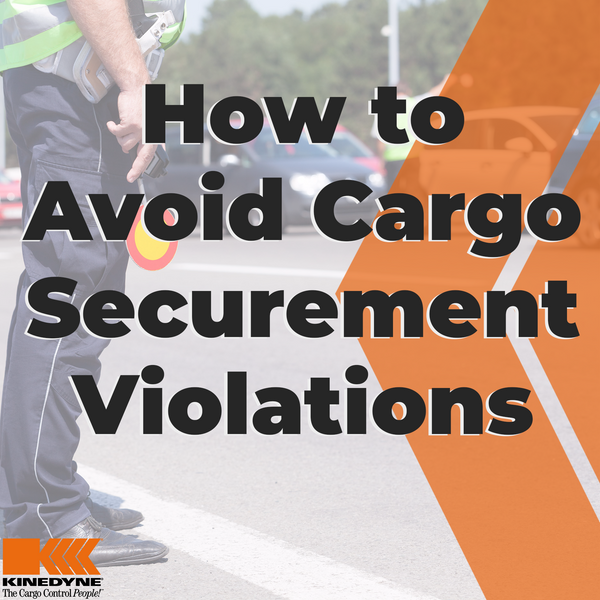Know What are Violations to Prevent a Trailer from Getting Taken Out of Service!
Proper cargo securement can mean the difference between life or death. Imagine a commercial truck carrying heavy building materials, vehicles, supplies, or other freight traveling at a high rate of speed on a busy highway. Now think of what could happen if those loads weren’t properly secured and they fell off the truck into traffic. The results could be disastrous.
In North America, organizations like the Commercial Vehicle Safety Alliance (CVSA), Federal Motor Carrier Safety Administration (FMCSA), Canadian Council of Motor Transport Administrators (CCMTA), Web Sling and Tie Down Association (WSTDA), Transport Canada and Secretariat of Communications and Transportation (Mexico) establish and enforce cargo securement standards and requirements that must be followed. These policies are in place to protect freight, drivers, and the general public.
So how can you ensure your load is secure and avoid being taken out of service? While the criteria for placing a vehicle out of service for cargo securement may vary depending on the jurisdiction and applicable regulations, here are the top four most common cargo securement violations, and how Kinedyne solutions can help you solve them ahead of time:
Overloaded or improperly distributed cargo
The weight of the cargo should be distributed evenly and not exceed the weight limit prescribed by the applicable regulations. Overloaded or improperly distributed cargo can cause instability and affect the handling of the vehicle.
Solution: It is important to know not only the weight of your cargo, but the forces that affect your cargo, so you can determine how much cargo securement you will need when transporting freight.
Kinedyne put together a short video that will help you understand those forces and how the cargo shifts throughout a route.
Insufficient tie-downs or load securement devices
The number, type, and placement of tie-downs and other securing devices should be sufficient to prevent the cargo from shifting or falling during transit.
Solution: Kinedyne has the highest quality cargo securement products, but even the highest-quality cargo securement equipment will become less effective over time due to regular wear and tear, exposure to harsh weather, and stress from securing heavy loads. It’s important to closely examine cargo securement equipment beforehand to ensure that it is safe to use and that it meets all federal, state, and local requirements. Kinedyne’s cargo securement line includes winch straps, winches, ratchet straps, chain, chain binders, beams, bars, and more.
Check out this video to learn about the regulations regarding the number of straps needed to secure a load on a flatbed trailer.
Damaged or worn tie-downs
Tie-downs and other cargo securement devices should be in good condition and capable of withstanding the forces that may be encountered during transit. Worn, damaged, or defective securing devices may compromise the safety of the cargo and other people on the road.
Solution: Inspect your cargo securement devices and ensure that all components of each cargo securement device are in compliance.
Kinedyne’s winch straps are a perfect solution for securing cargo, and the Kinedyne 4" Winch Straps range from a 5,400lb WLL to 6,700lb WLL!
In order to maintain the integrity of the strap for as long as possible, watch this short video on how to inspect your winch strap for damage.
Inadequate blocking and bracing
Cargo that is not secured properly can shift during transit, potentially causing the load to become unstable and hazardous. Blocking and bracing should be used to prevent movement of the cargo.
Solution: To help reduce freight damage caused by tipping over, try using Kinedyne Shoring Bars, or Interior Van Straps to ensure your cargo won’t move during transit. These solutions will also increase the safety of drivers opening the trailer door, as they won’t have to worry about getting hit by falling cargo.
 US Dollars
US Dollars


 CA EN
CA EN
 MX ES
MX ES
